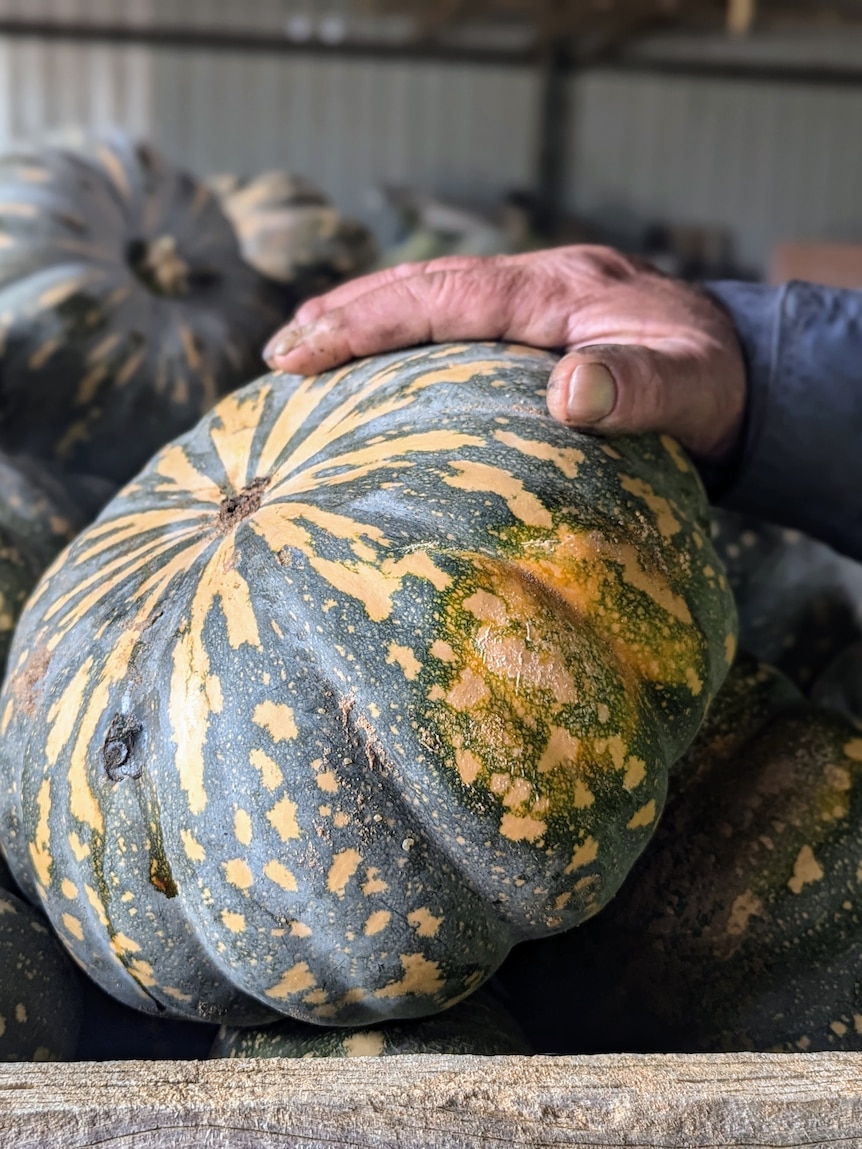In short:
Pumpkin growers in South Australia have reported prices have dropped as low as 60 cents a kilogram for their produce.
More SA farmers are growing pumpkins for a quick “cash crop” due to low prices for red wine grapes amid a global oversupply.
What’s next?
Despite SA farmers getting paid less, the cost of pumpkin has risen to about $4 per kilogram in big supermarkets, which say flooding and heavy rain on the east coast has affected supply.
From sprouting accidental backyard patches to giant pumpkin competitions, the winter staple is seen as one of the easiest crops to grow.
Last year, about 60 per cent of Australian households purchased pumpkins, according to industry body Hort Innovation.
But despite more farmers planting the “cash crop” hoping for good returns, shoppers are paying higher prices at the check-out.
While almost half of the nation’s crop is grown in Queensland, Steve Brauer has been seeing more pumpkins among the vineyards and on roadside stalls in South Australia’s Riverland.
“With the price of [wine] grapes, they’ve got to look at alternative crops and pumpkins are probably the easiest one to grow pretty quick,” he said.
“But it doesn’t help the ones [like us] who are in it for the long term.”
Mr Brauer, who mostly sells to a Sydney wholesaler, said more farmers jumping on the pumpkin bandwagon to chase revenue amid the red wine glut was driving down his returns.
“The market is way oversupplied this year,” he said.
“Last year wasn’t good but I still got 80 cents [a kilogram]. This year for most of the season [I got paid] 60 cents [per kilogram].
“It’s nearly 40 cents before you can actually make a return because you have got to cover the cost of fertiliser, water, and electricity.”
Big opportunity
The ease with which pumpkins grow has sparked many giant pumpkin competitions around the world with the record standing at 1,246.9kg.
For more than a decade, Kevin Myers has run the Murray River Giant Pumpkin and Sunflower Competition at Cadell, downstream from Mr Brauer.
He said they grew the giant Atlantic pumpkin for the competition, but butternuts were probably the most forgiving and the tastiest variety.
“They’re actually what’s considered a cash crop,” Mr Myers said.
“If you store them properly, they’ll last quite a few months.
“So instead of everybody sending them off at one time and making the price crash, they can be slowly fed to the market.”
Patchy supply
Penny Reidy, the marketing manager for the South Australian produce market, said the supply of pumpkins was strong thanks to an uptick in producers.
“We’re definitely seeing different growers entering into that space,” she said.
“It’s quite a low risk commodity to be growing, and you can get a good return on them.”
But Ms Reidy said wholesale prices — the cost of a product from the manufacturer or distributor to the retailer — had remained consistent.
“They’ve been sitting around about $1 to $1.40 per kilo wholesale, which is similar to what they were in 2020,” she said.
“We are not seeing a glut of supply, otherwise we would see a massive reduction in wholesale prices.”
While conditions in South Australia have been conducive to a strong supply this season, flooding and heavy rain on the east coast has affected supply.
A Woolworths spokesperson said less overall supply meant prices were higher, at about $4 a kilo.
In a statement, they said they had seen “higher than usual demand” for butternut and Kent pumpkins in recent months.
The spokesperson said they were paying suppliers more for pumpkins than last winter.
A spokesperson for Coles said higher prices for pumpkins in store this year were due to availability as a result of seasonal growing conditions.
Stories from farms and country towns across Australia, delivered each Friday.
Posted , updated




